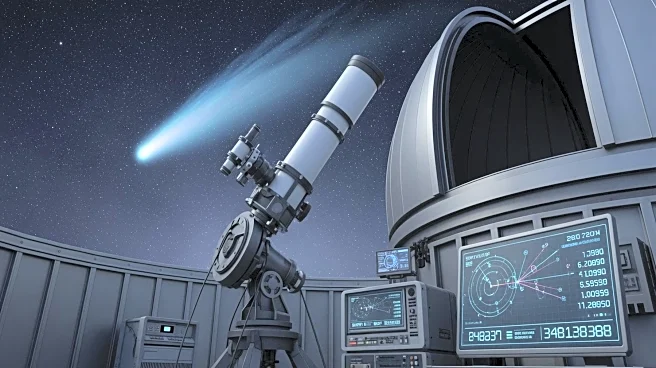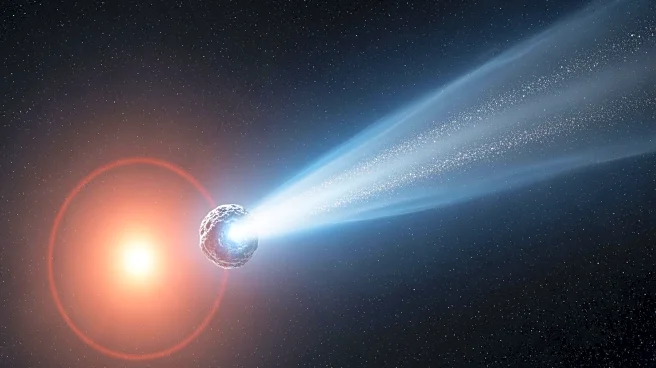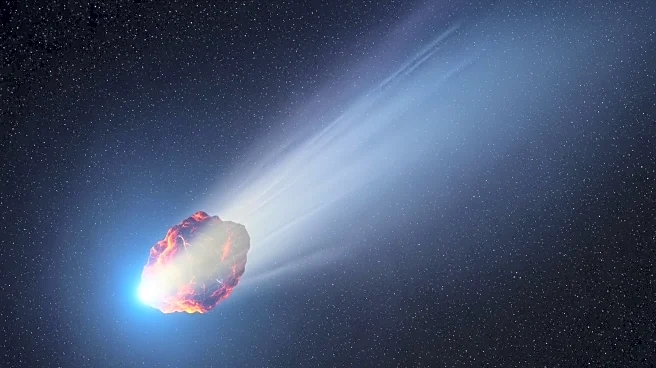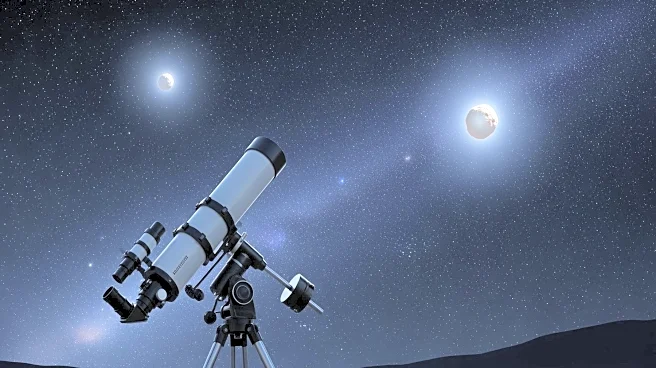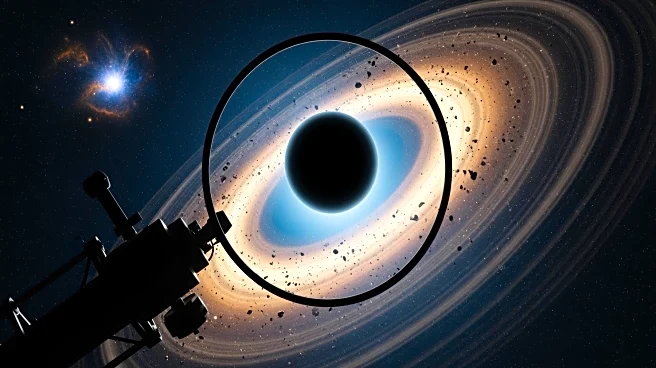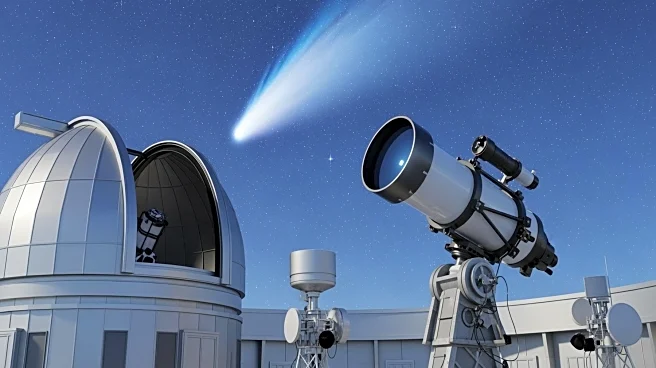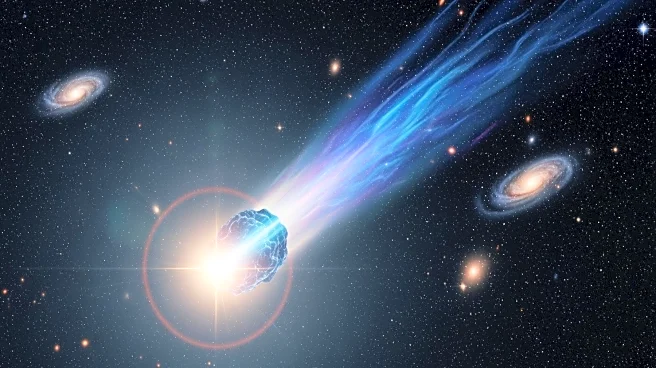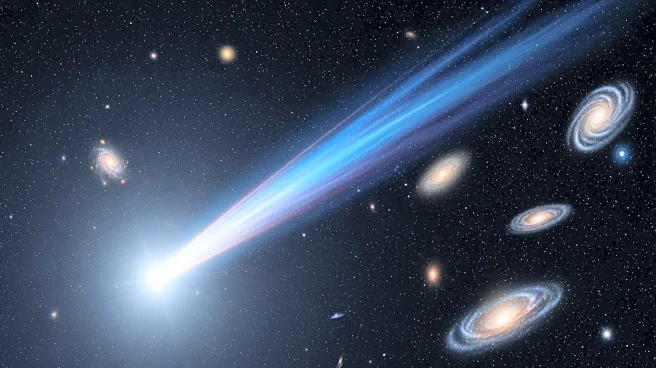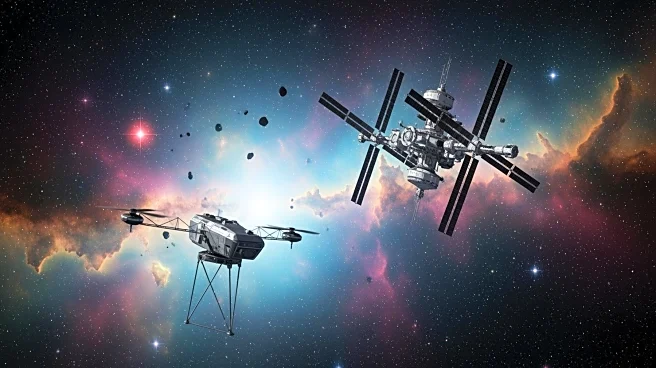What's Happening?
NASA, in collaboration with the International Asteroid Warning Network (IAWN), has initiated a global campaign to track the interstellar comet 3I/ATLAS. This comet, discovered earlier this year, is the third
known interstellar object to pass near our solar system. Although it poses no threat to Earth, the campaign aims to enhance the detection and prediction capabilities for potentially hazardous objects. The comet will make its closest approach to Earth at a distance of 1.8 astronomical units, providing a unique opportunity for scientists to test and refine their observational techniques. The initiative involves telescopes, research centers, and volunteers worldwide, focusing on improving global systems for detecting potential impact threats.
Why It's Important?
The tracking of 3I/ATLAS is significant as it serves as a practice run for planetary defense strategies. By studying the comet, scientists can refine techniques to measure the motion of celestial objects, which is crucial for predicting and mitigating potential asteroid threats. This effort is part of a broader international response to near-Earth object threats, as recommended by the United Nations. The campaign also invites citizen scientists to participate, fostering public engagement and expanding the observational network. The data collected will contribute to global efforts to protect Earth from future space threats.
What's Next?
The campaign will continue with workshops and teleconferences starting on November 10, 2025, allowing both professional and amateur astronomers to collaborate in data collection and analysis. The comet is expected to exit the solar system between November 27, 2025, and January 27, 2026. The insights gained from this campaign will be used to enhance global asteroid defense systems, potentially influencing future policies and international cooperation in space threat mitigation.
